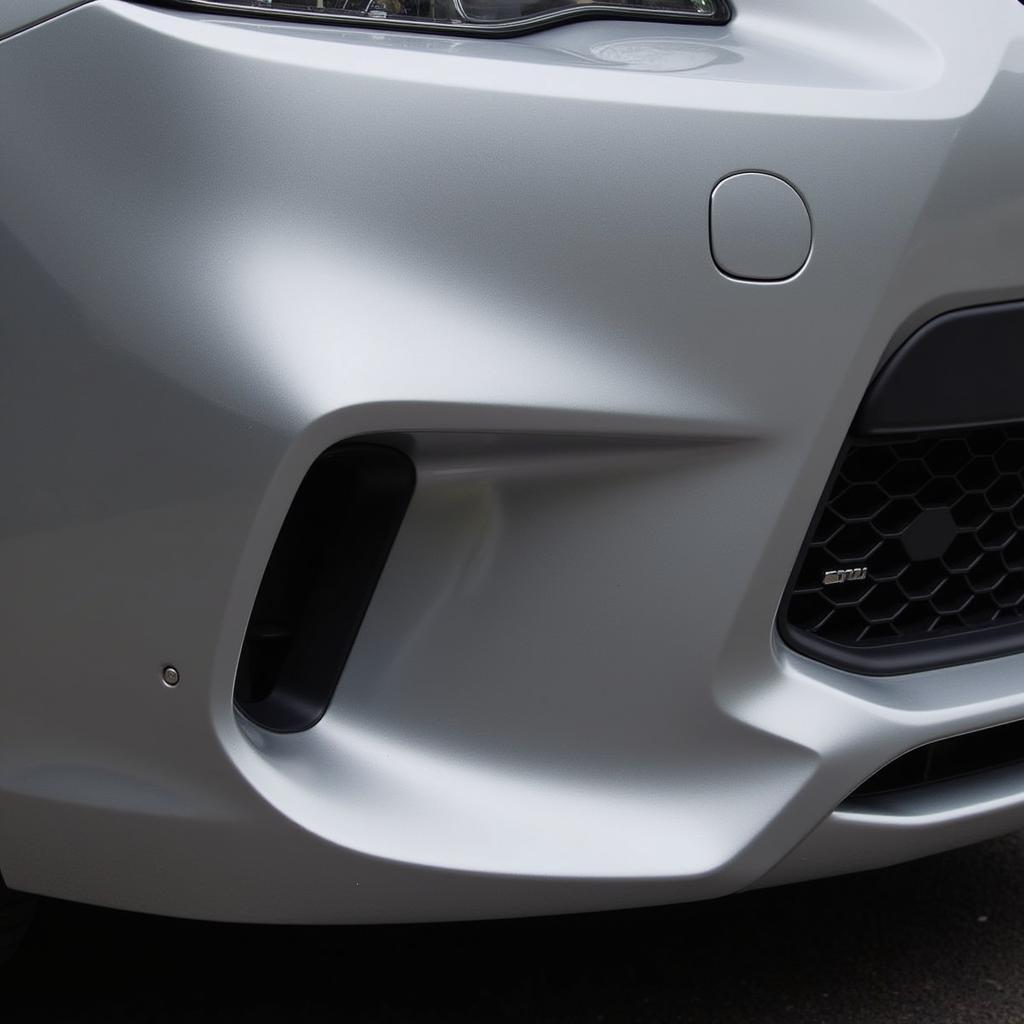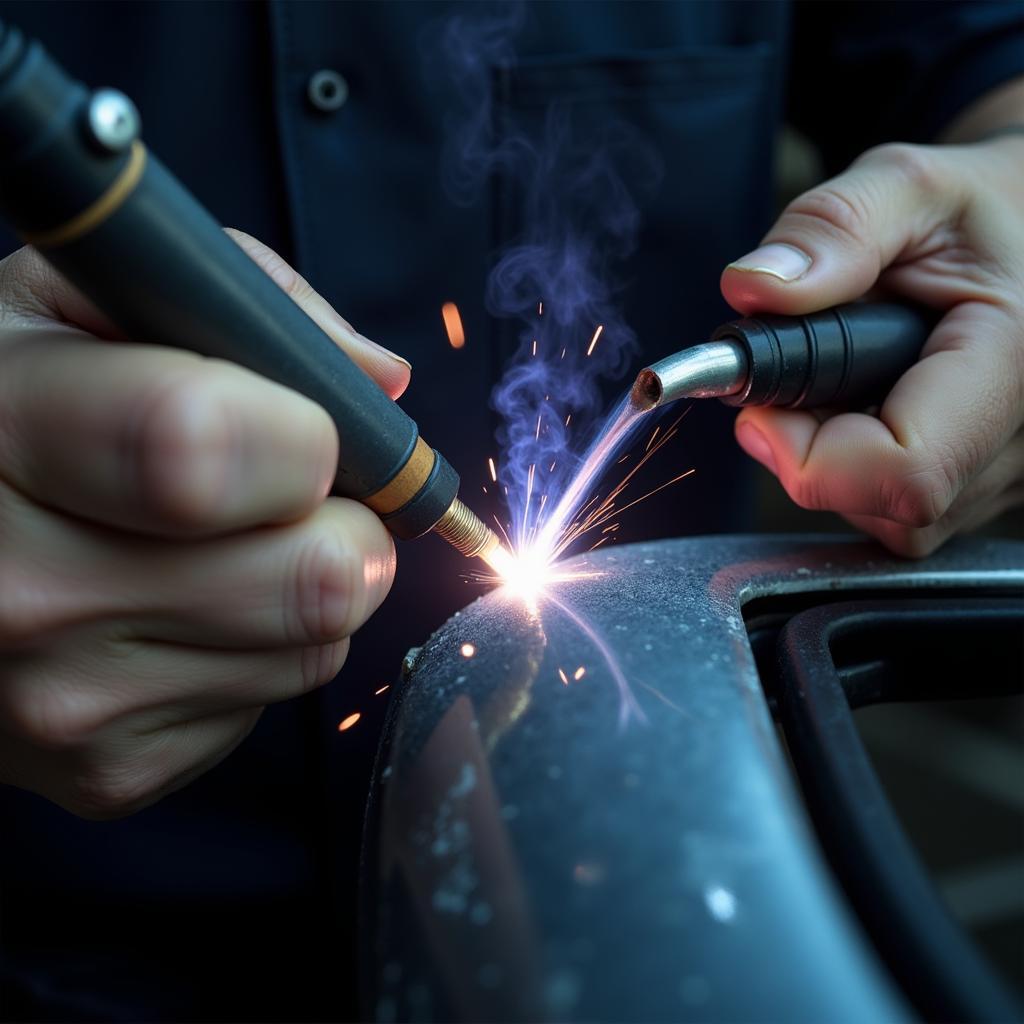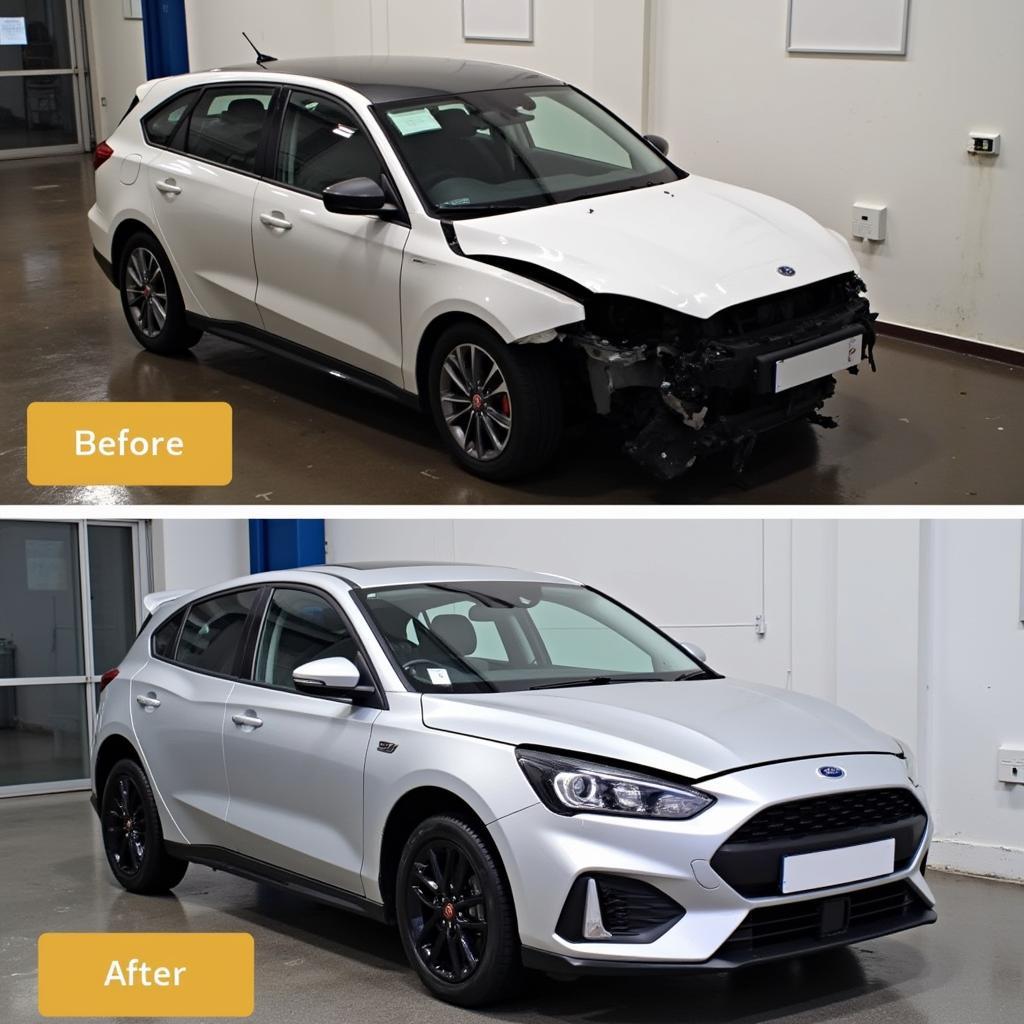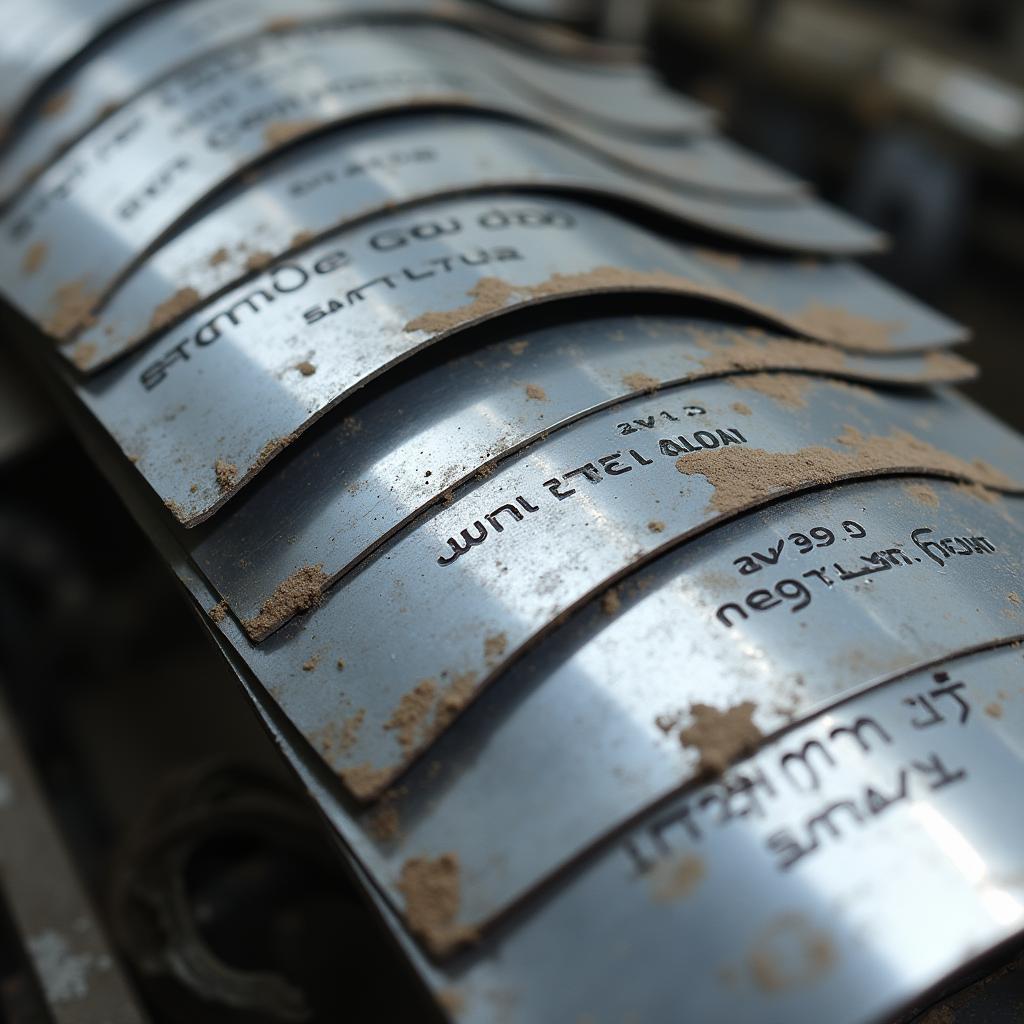
Car body repair with different steel gauges
When it comes to car body repair, understanding steel gauge thickness is crucial for a successful outcome. Whether you’re a DIY enthusiast or a seasoned professional, knowing the right gauge for the job ensures the structural integrity and aesthetic appeal of your vehicle. This comprehensive guide will delve into the intricacies of car body repair steel gauge thickness, empowering you to make informed decisions.
 Car body repair with different steel gauges
Car body repair with different steel gauges
Decoding Steel Gauge: What Does It Mean?
In simple terms, steel gauge refers to the thickness of the sheet metal. The lower the gauge number, the thicker the steel. For instance, 18 gauge steel is thicker than 22 gauge steel. Each gauge represents a specific thickness measurement, which can vary slightly depending on the manufacturer and steel type.
Why Does Steel Gauge Matter in Car Body Repair?
Choosing the correct steel gauge is paramount for several reasons:
- Strength and Durability: Thicker steel gauges offer greater strength and resistance to dents, impacts, and wear and tear. Structural components like frame rails and pillars typically require thicker gauges.
- Aesthetics: Thinner gauges are more malleable and easier to shape for cosmetic repairs on panels like doors and fenders.
- Weight: Thicker gauges add more weight to the vehicle, potentially affecting fuel efficiency and handling.
- Weldability: Different gauges have varying weldability characteristics, influencing the welding techniques and settings required.
Common Steel Gauges Used in Car Body Repair
Here’s a breakdown of the most common steel gauges you’ll encounter:
- 18 Gauge (0.0478 inches): The thickest gauge commonly used, typically found in structural components like frame rails, floor pans, and reinforcements.
- 20 Gauge (0.0359 inches): A versatile gauge suitable for both structural and cosmetic repairs, often used for inner panels, supports, and some exterior panels.
- 22 Gauge (0.0295 inches): A thinner gauge primarily used for exterior body panels like doors, fenders, quarter panels, and roof skins.
- 24 Gauge (0.0239 inches): The thinnest gauge typically used, mainly for cosmetic trim pieces, moldings, and non-structural components.
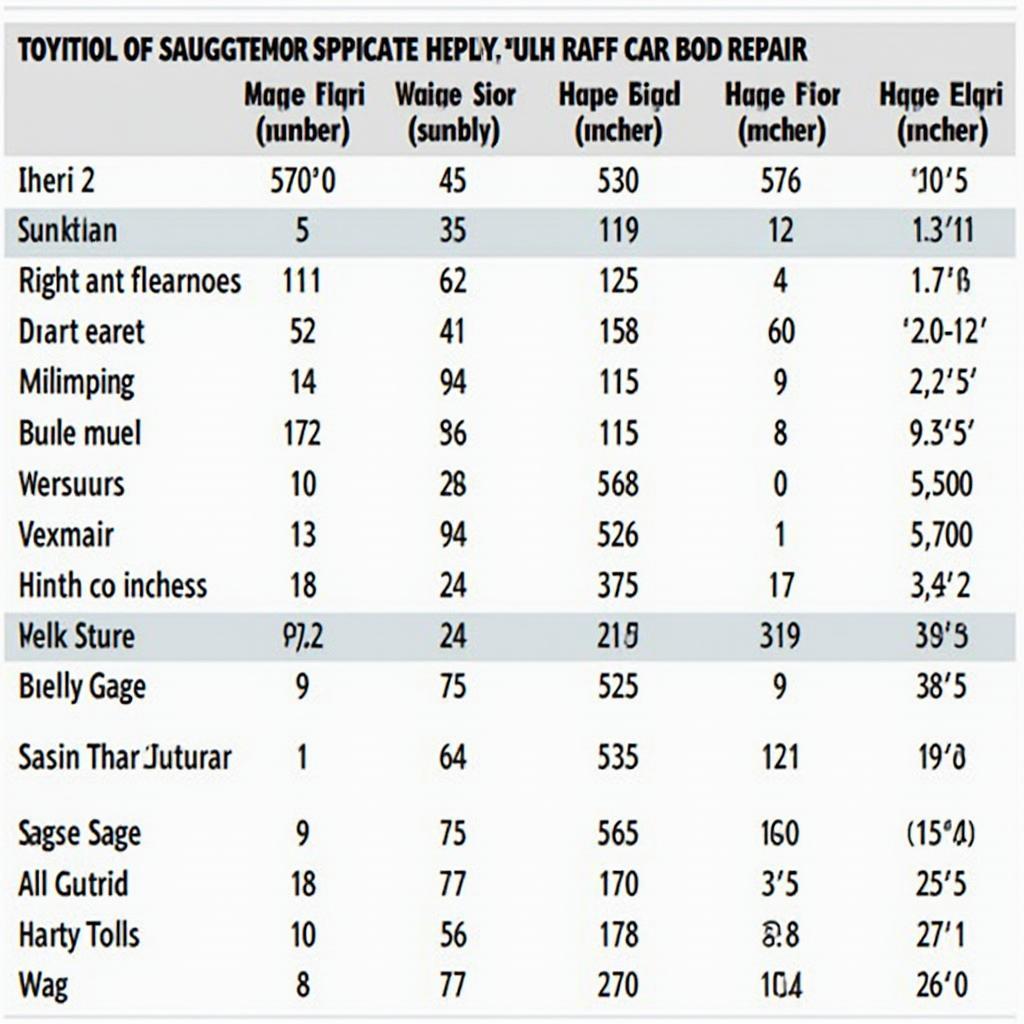 Chart comparing different steel gauges
Chart comparing different steel gauges
Matching Steel Gauge for Seamless Repairs
When performing car body repairs, it’s crucial to match the steel gauge of the replacement panel to the original as closely as possible. Using a different gauge can lead to:
- Uneven Surfaces: Thicker panels may protrude, while thinner panels might create depressions, affecting the vehicle’s aesthetics.
- Structural Weakness: Mismatched gauges can create weak points in the body structure, compromising safety in collisions.
- Welding Difficulties: Joining different gauges requires specialized welding techniques and can increase the risk of warping or burn-through.
How to Determine the Correct Steel Gauge
- Consult the Vehicle Repair Manual: The most accurate way to determine the original steel gauge is to refer to the vehicle’s repair manual. It provides specific gauge specifications for each body panel.
- Inspect the Damaged Panel: If the damaged panel is accessible, you can often find the gauge number stamped or printed on the backside.
- Seek Professional Advice: If you’re unsure, consult a qualified auto body repair professional. They have the experience and tools to identify the correct gauge for your vehicle.
Conclusion
Understanding car body repair steel gauge thickness is fundamental for achieving professional-grade repairs that restore both the structural integrity and visual appeal of your vehicle. By following the guidelines outlined in this article, you can confidently tackle car body repair projects with the right gauge for the job. Remember, when in doubt, seeking advice from a trusted auto body repair professional is always recommended.

